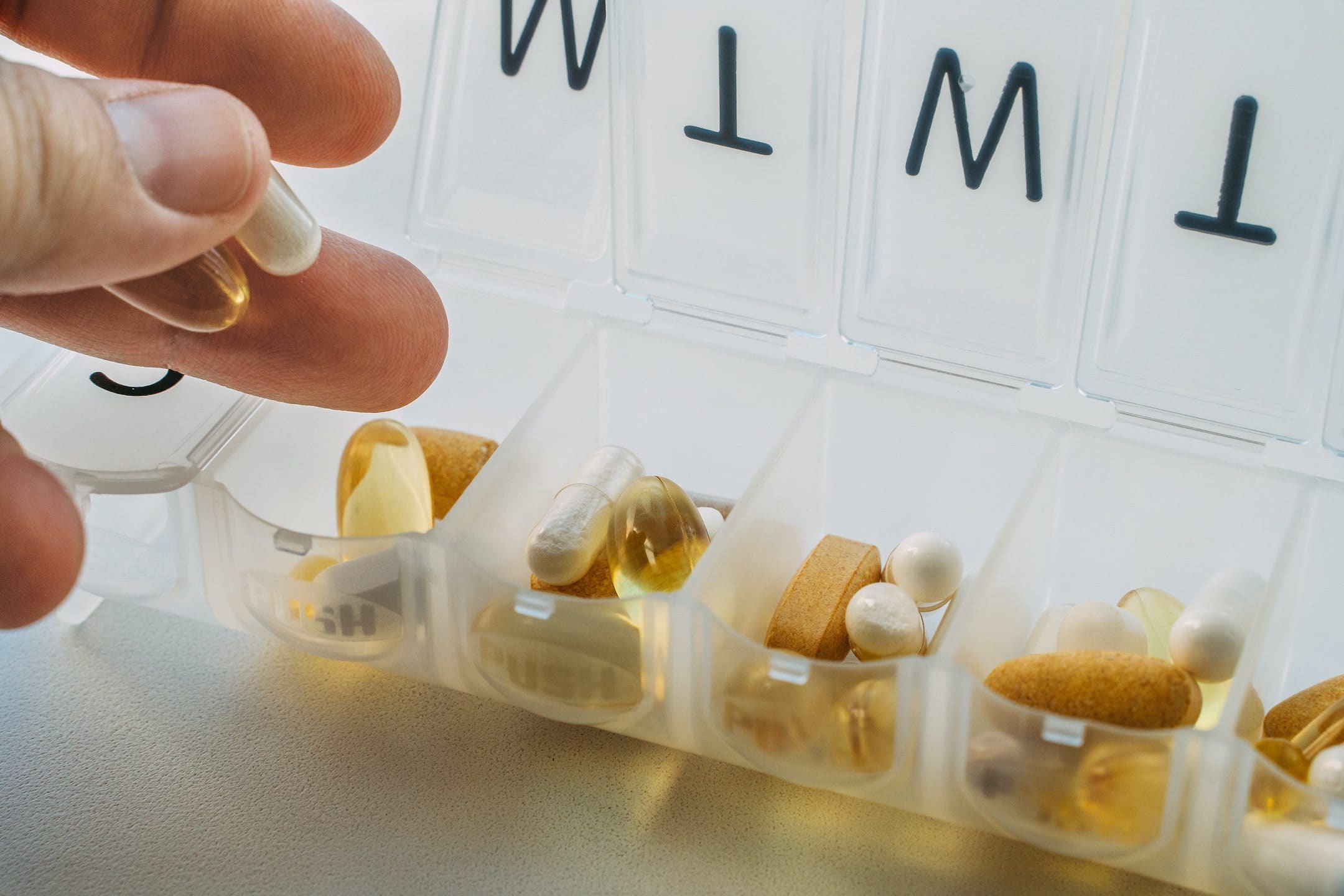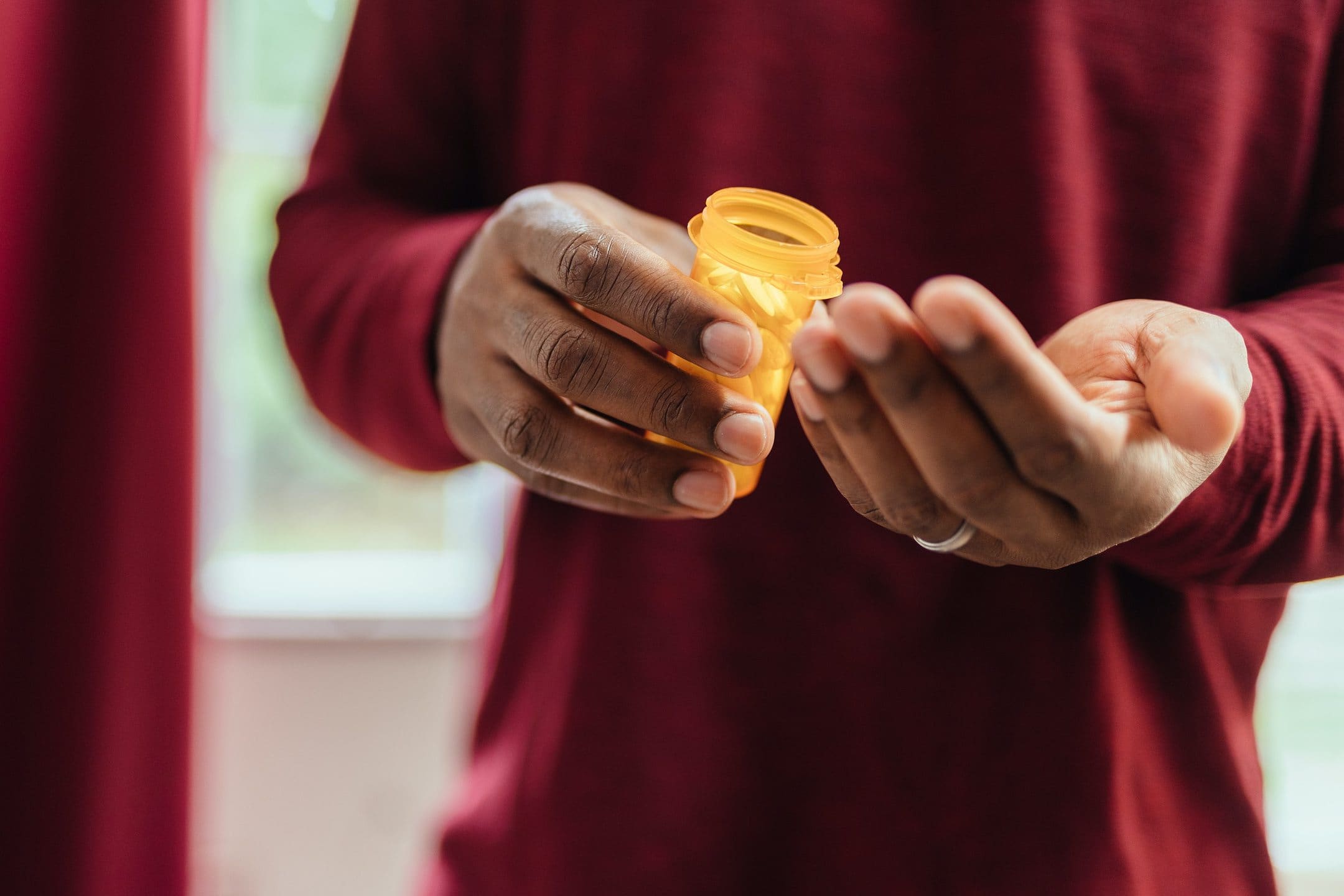Getting pregnant often isn’t as straightforward as just having sex. In fact, for many people, the process can be more complicated than you might expect, involving an understanding of the menstrual cycle, ovulation testing, and carefully timed intercourse.
Not sure how it all fits together? We’re here to help with a male partner’s guide to ovulation testing. We’ll cover how your partner’s monthly cycle works, why understanding ovulation is important to predict fertility, and how ovulation testing is done.
Key takeaways
- During your partner’s monthly menstrual cycle, changing hormone levels prepare the body for pregnancy.
- Typically around halfway through the menstrual cycle, one of the ovaries will release an egg for fertilization in a process called ovulation. Having sex around this time leads to a higher chance of pregnancy.
- An ovulation test, which checks for hormone levels in the urine, can help you predict when ovulation is occurring, to give you a greater likelihood of conceiving a child.
- Home ovulation testing with ovulation prediction kits (OPK) is affordable and worth trying if you and your partner are attempting to become pregnant.
Starting with the ovaries
The ovaries play an essential role in achieving pregnancy. The ovaries make and store eggs, and release hormones that affect the menstrual cycle and pregnancy. There are usually two ovaries, one on each side of the uterus.
Each ovary contains thousands of small sacs, called follicles, that each hold one egg. During a process called ovulation, which occurs at approximately the middle of each menstrual cycle, a follicle in one ovary releases an egg.
This egg then has the potential to be fertilized by a sperm. If this fertilization occurs, it can lead to pregnancy.
The ovaries will stop releasing eggs when a person reaches menopause, which generally starts around age 52. However, female fertility begins to decrease around age 30. People with ovaries are born with all their eggs, and the number declines as they age. Eggs also have a higher chance of having abnormal chromosomes the older a person gets, increasing the risk of genetic disorders in the child.
Understanding the menstrual and ovulation cycle
Becoming familiar with the stages of the menstrual cycle is a key step in understanding ovulation and predicting fertility.
The menstrual cycle starts on the first day of menstruation, also known as a period. It usually lasts between 24 and 38 days — typically 28 days, though this can change each month and also varies from person to person. During this time, changing levels of the hormones estrogen and progesterone cause the body to get ready for pregnancy.
Days 1–5 comprise menstruation, commonly known as a monthly period. Around day five of the cycle, increasing estrogen levels lead the follicles in the ovary to prepare for ovulation — the release of an egg. This is the follicular phase. Ovulation then occurs around day 12 to 14, triggered by an increase in luteinizing hormone (LH).
The final phase of the cycle is known as the luteal phase. During this phase, hormones prompt the uterine lining to thicken to prepare for the fertilized egg.
If the egg isn’t fertilized by sperm, hormone levels will fall, causing the uterus to discard its lining. This tissue, menstrual blood, and dissolved egg leave the body through the vagina during menstruation. The process restarts with the first day of the next period.
Timing and fertility
Timing is key when it comes to getting pregnant. Having sex at the right point during the monthly cycle — just before and around the time of ovulation — can help increase your chances of conceiving a child. Fortunately, you can predict when this will occur and take advantage of it to help your partner become pregnant.
The ovulation window
The ovulation window, or fertile window, includes the five days before ovulation until the day after ovulation. During this timeframe, your partner has the highest chance of becoming pregnant.
This is because once the egg is released during ovulation, it travels to a fallopian tube to await fertilization, remaining there for around 12 to 24 hours. Sperm can survive inside your partner’s reproductive tract for up to five days.
Therefore, if you have sex within the five days before ovulation, live sperm in the female reproductive system have the opportunity to fertilize the egg. Having sex multiple times during the fertile window — especially closer to the point of ovulation — increases the number of sperm in the reproductive tract and increases the chances of pregnancy. Most experts recommend having unprotected sex every 1–2 days during your partner’s fertile window if you hope to get them pregnant.
(Ovulation timing can change each cycle, and may suddenly happen earlier or later than it had in previous months. Therefore, trying to calculate — and avoid — your partner’s fertile window isn’t a reliable form of contraception.)
What is ovulation testing?
So, how can you know when your partner is ovulating and increase your chances of becoming pregnant during the fertile window?
While ovulation usually occurs around day 12 to 14 of the menstrual cycle, it can vary for different people and across different cycles. Instead of counting the days, it’s more reliable to watch for signs of ovulation. Signs of ovulation include:
- An increased quantity of clear mucus from the vagina, called “egg white cervical mucus”
- A higher basal (resting) body temperature
- A positive ovulation test or ovulation prediction kit
How is ovulation testing done?
Since ovulation is triggered by a rise in LH, ovulation tests, also known as ovulation prediction kits (OPKs), assess the levels of this hormone in the urine to estimate ovulation and predict fertility.
An ovulation prediction kit usually includes several urine sticks. Your partner may want to start testing around day 10 of their cycle, if they’re not yet sure when they ovulate. It’s important to test every day so you don’t miss the increase in LH levels.
Your partner takes the test by peeing on the stick or putting the stick in a container of urine, much like a pregnancy test. A positive result will indicate that there’s a surge of luteinizing hormone. In general, a positive result means ovulation should occur in the next 24 to 36 hours. (So, if you’re trying to conceive, it’s time to have sex!)
It’s also possible to estimate when ovulation will occur by tracking basal body temperature (BBT). BBT is a person’s “resting” temperature, taken first thing in the morning after waking up, before getting out of bed. This temperature rises slightly during ovulation. Tracking it for a few months allows you to understand the pattern and be able to reliably use this method.
How much does ovulation testing cost?
Standard home ovulation prediction kits that check hormone levels in urine typically cost around $10 to $30. Urine ovulation test kits are often sufficient to determine ovulation, especially for people with a regular menstrual cycle.
More advanced ovulation test options include wearable and electronic devices that measure basal body temperature or other metrics. These options can cost over $100, but might make ovulation testing more convenient and reduce user error.
Supporting your partner during ovulation testing
The responsibility of ovulation testing falls primarily on the female partner in a heterosexual couple. Getting interested and involved is a great way to be an equal partner in the process of trying to conceive.
Try:
- Learning about your partner’s ovulation cycle (reading this article is a great start!) and talking to her about how she’s tracking or testing.
- Tracking your partner’s cycle with her and asking about the results of ovulation testing.
- Getting a semen analysis yourself, so you’re both involved in pre-conception testing.
- Planning a fun date night for the day of ovulation.
- Keeping sex exciting and fun, even while trying to conceive and having sex on a schedule.
- Counting down the days of the two-week wait together, so you can take a pregnancy test.



